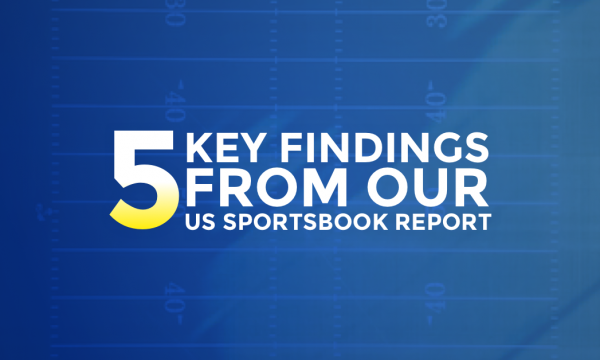
Last week, as the new season prepared to kick-off, the Premier League announced that it would be clamping down on breaches of its copyright on social media. Most notably, Vine would be a major focus of this clampdown.
Vine in particular came under the spotlight during the World Cup, with this summer’s tournament seeing a huge boom in the number of videos posted online – often within seconds of events occurring on the field.
The problem for organisations like the Premier League is that it likes to monetise such content. It makes £3bn from BT Sport and Sky Sports for television rights, whilst News International has paid for online and mobile rights (which are delivered to online subscribers of The Sun and The Times). Having this content freely available online via Twitter and YouTube significantly undermines the value of those contracts.
But we’ve been here before. Football Data Co has previously sent online fanzine owners invoices for thousands of pounds for the heinous crime of publishing their favourite team’s fixtures, whilst the Premier League is already in a number of long-running digital battles, most notably with online streaming services. Despite their efforts, and aside from the closure of a few high-profile sites, supporters are still streaming content every Saturday. As the music industry has found, for every service that closes, another opens elsewhere; it’s a never-ending game of digital whack-a-mole.
This latest offensive is likely to be even more futile. The Premier League is going up against a significantly greater volume of users – and this weekend showed the true extent of the problem.
The graph above shows the level of video content (such as YouTube or Vine content) published to Twitter for three key hashtags over the weekend; #epl, #premierleague and #MNF (relating to the Monday Night Football clash between Burnley and Chelsea). Close to 40,000 videos were posted with the #epl on Saturday alone.
Few would dispute the rights of any organisation to protect its own property, but targeting social media users is both futile and outdated. There are better ways.
Give some of your content away for free
When it comes to digital, there is an element of ‘if you can’t beat them, join them’, but it doesn’t mean opening the floodgates. The easiest way to prevent your content being used in a way that you don’t want it to be used, is to make it easy for people to use your content in ways that you do want it to be used.
We’ve previously blogged about Getty Images and their decision to open up its content archives to bloggers and social media users. Getty, which has long had challenges with copyright theft, now allows publishers to embed its images in their content for free. In giving up the losing battle of fighting those who posed a risk to Getty’s very business model, it empowered them – creating potential new revenue streams in the process.
The Premier League can apply a similar principle – as other sports rights owners have done to great effect.
In 2014, Wimbledon brought near-live video highlights to social media, with major plays from its three biggest courts being uploaded to Twitter, Facebook, Google+ and YouTube within seconds of occurring. The move resulted in 3.5m clip views and significant gains for Wimbledon on social media.
In the United States, the National Football League does something similar. On game day, NFL.com is constantly being updated with video content of touchdowns and major plays at every stadium. Much this content is free to access, updated within minutes of the event and accompanied by advertising. It also supports the NFL in selling its premium content services, such as RedZone and Gamepass, both domestically and internationally.
It would, of course, require the Premier League to rethink its model on selling digital media rights, but it does take the wind from the sail of the unauthorised uploaders and give the rights holder better control over their content. Users wouldn’t have to seek out unauthorised sources of content if they can easily access the content they want through the official channels.
Encourage users to create content for you
One of the trade-offs from a more social-friendly strategy is a greater connection with your audiences. By empowering your audiences with social content, you increase the chances that they will reciprocate by creating their own content and become ambassadors for your brand.
Sport is something that people feel intense passion for, something that people debate intensely and something that people dedicate significant levels of time and money to. There is huge levels of content being created every day by ordinary supporters and those sports should be capitalising on that. Instead, we hear reports of bloggers being invoiced for publishing a fixture list, of supporters having cameras confiscated at stadiums and of clubs attempting to silence critics on web forums. It's counter-intuitive.
Brands have been reaping the rewards of engaging digital influencers and allowing bloggers, vloggers and social media influencers to create their own content around a product or brand. Sport is a sector that should have embraced this more than any other.
Be a part of the experience
Another area in which Wimbledon in particular has excelled is in the creation of “social media command centres”, which are incredibly effective at sorting through the masses of content surrounding an event to ensure that those event owners can understand what their audiences are discussing and actively take part in the conversation. Brands are also adopting this, with brand newsrooms becoming increasingly common.
It is still a concept that is very much in its infancy. So few stadiums are equipped with Wi-Fi that it actually makes it difficult for supporters to take part in a conversation and if the fans in the stadium can’t share their experiences, it is a missed opportunity for clubs and event organisers.
Some venues are addressing the issue of connectivity, with Manchester City recently equipping their stadium with Wi-Fi. Southampton FC also recently started to integrate match day tweets into their pitch side advertising hoardings but still, organisers seem slow to share in the fan experience.
Want to know more about our approach to social media? Get in touch and see how we can help.


